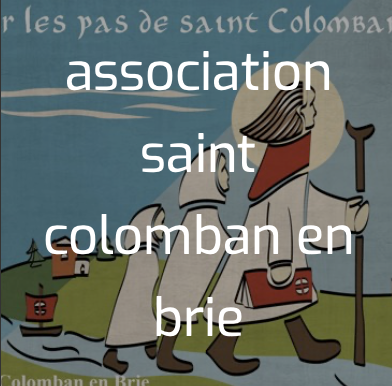Jouarre no Nanteuil-sur-Marne
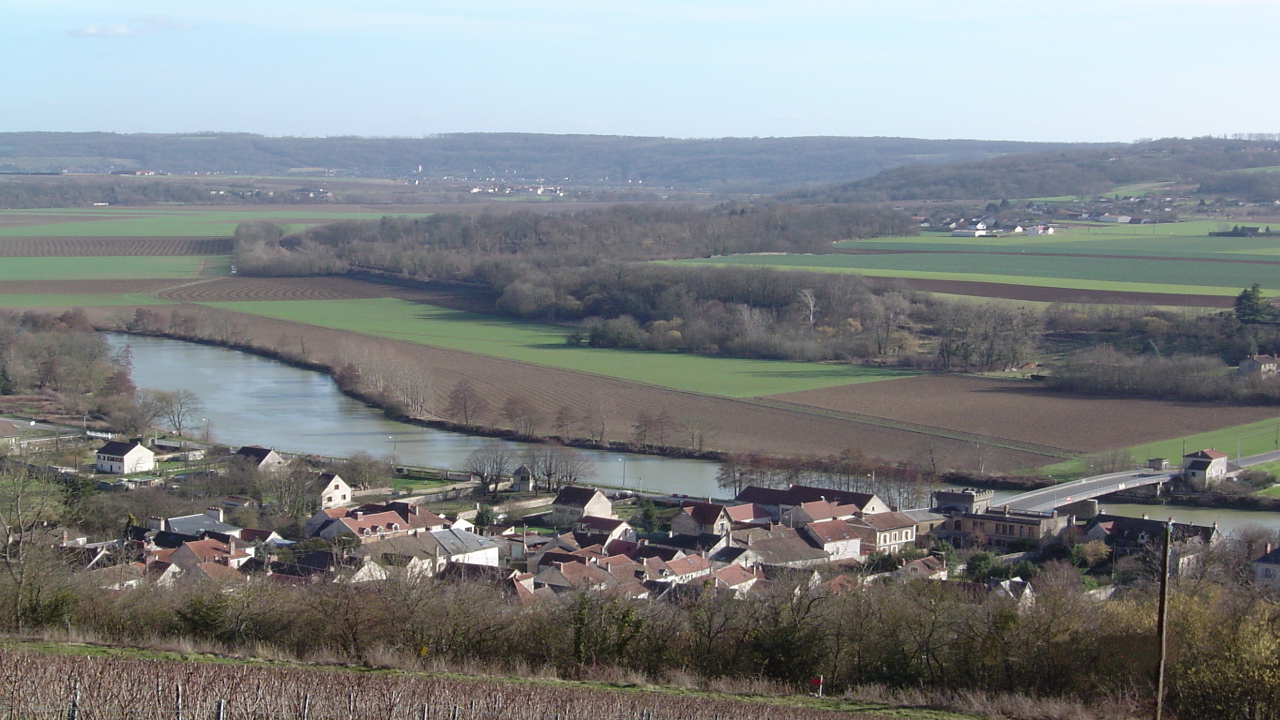
Île-de-France
9. Jouarre no Nanteuil-sur-Marne
Very easy
3h30
13,8km
+315m
-387m
Step
Embed this item to access it offline
Through towpaths, along the river, forest roads, small villages and vineyard paths, our varied route links a site of the first Battle of the Marne (1914) with the active presence of British and Commonwealth soldiers. The remains of the millstone port at La Ferté-sous-Jouarre will tell you the story of this glorious era of the millstone industry made from local stone.
7 points of interest

Vue générale de la crypte Saint-Paul - Association Colomban en Brie St ColumbanCrypte Saint-Paul à Jouarre
The crypts of Saint Paul and Saint Ebregisile, located behind the chevet of the parish church of Jouarre, contain the tombs and some cenotaphs of the founders and the first abbots and abbesses of the abbey Notre Dame de Jouarre still preserved in the 21st century. These crypts, whose initial construction dates back to the 7th century, have undergone many changes and alterations that make their history difficult to read. In their architecture as in the decoration of the tombs they contain, they combine the influences of several periods (Merovingian, Carolingian).
The first archaeological excavations of the crypts date back to the early 1840s. The relocation of the cemetery in the immediate vicinity of the crypts enabled Abbot Thiercelin to carry out a comprehensive study of the crypts and the remains of the church of Saint-Paul in 1869-1870.
A monument open during the day, the crypt can be visited with an application and guided tours are organised by the Jouarre tourist office.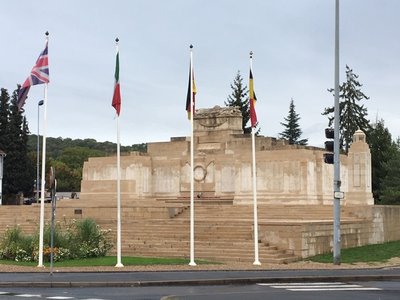
Mémorial britannique de la première guerre mondiale, à La Ferté-sous-Jouarre - Association Colomban en Brie HistoricalBritish First World War Memorial at La Ferté-sous-Jouarre
Just next to the Pont de l'Europe you pass the memorial where the names of 3888 British soldiers who fell in the First Battle of the Marne in September 1914 are engraved. It is the work of the sculptor Goldchmidt in 1928. Fighting was intense at this place so that the British troops, under the command of General French, succeeded in crossing the river on a boat bridge and resuming the offensive. It is surmounted by a sculpture in the shape of a sarcophagus decorated with war trophies, flag, bayonets and helmet. The short sides of the memorial are adorned with a carved sword, pointing downwards, while the front and back of the monument are carved with panels surmounted by a carved crown. The inscriptions are in English and French.
More information Wikipedia
Meules utilisées comme soubassement du quai - Association Colomban en Brie HistoricalL’industrie meulière à la Ferté-sous-Jouarre
The millstone industry in La Ferté-sous-JouarreFor several centuries the quality of the stone from La Ferté-sous-Jouarre has been recognised for its qualities in the manufacture of millstones for cereal mills. Its hardness and its slightly granular aspect allows it to keep its original qualities for a long time.
The reputation of La Ferté millstones has conquered the whole of Europe and the United States.
Until the first half of the 19th century the millstones were shipped by sea, the remains of the millstone port can be seen on the banks of the Marne at La Ferté-sous-Jouarre. At that time there are 4000 workers employed in this extraction and its manufacture making the wealth of local businesses. The economic prosperity develops the small town of La Ferté and the residences of masters are born.
At the end of the 19th century, the arrival of the railroad will give a new economic impetus to this industry. In the middle of the 20th century, grinders made with steel rollers replaced the millstones in the mills. While these allowed for greater efficiency, their speed of rotation separated the germ from the grain as well as its husk. It is the germ that contains most of the nutritional elements of the grain. Flours obtained in this way are lower in protein, minerals and vitamins. The activity of the millers died out in the 1950s.
At La Ferté-sous-Jouarre, on the via Columbani, you can observe the used millstones used to reinforce the road along the Marne river after the bridge of Europe.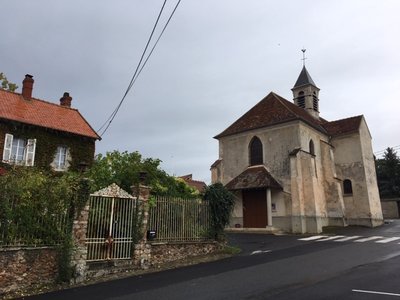
Église Saint-Pierre et Saint-Paul de Rueil-en-Brie - Association Colomban en Brie St ColumbanChurch Saint-Pierre and Saint-Paul de Rueil-en-Brie
Reuil or Radolium keeps the memory of a priory, installed by Radon, a son of Authaire, lord of Ussy visited by Colomban in the 7th century. In the 12th century, it became a Benedictine priory Saint-Pierre-Saint-Paul depending on the abbey of Cluny. Information is lacking to know the history of this priory which would have been built on the site of the church.
The painter Henri Hayden stayed there in the village. In the woods above the village, you will recognize holes, former sites of extraction of millstones, and an area of extraction of clay to make bricks and tiles in Luzancy.
Château de Luzancy - Association Colomban en Brie TouristLuzancy Castle
Built in the Middle Ages and then probably destroyed during the Hundred Years' War; the present building was built in the 15th or 16th century. Owned by Marshal de Berchery, of Hungarian origin and commander of the hussars under Louis XIV, it welcomed illustrious guests such as Chausson and Debussy. Louis XV was the Marshal's guest.
The "freyssinet" bridge is a reconstruction after the destruction of June 1940. Luzancy was often the scene of violent confrontations during the wars of the last centuries. The castle was the seat of the "American Women's Hospital No. 1" of 150 beds managed exclusively by American women doctors, serving the population, after the arrival of the American contingent in 1918. The church is dedicated to St Germain St Leu.
Jean-Baptiste Corot, a painter and engraver in the 17th and 18th centuries, was not the only artist to stay here. The "lodge", a cenacle of artists made it easier for them to stay for a long time at the end of the 19th century. Every year, Corot, a painter from Ville d'Avray and Barbizon, came to stay with his friends Rémy, whose house dominated the rue de l'Eglise and the former rue du Bac, which became allée Corot.
Today the castle of Luzancy is used as a children's home. It welcomes 76 children, teenagers and young adults who encounter difficulties in their family environment.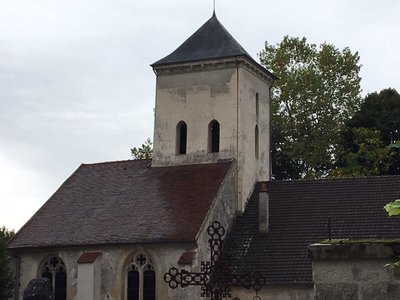
L’église Saint-Germain et Saint-Leu à Luzancy. - Association Colomban en Brie TouristChurch Saint-Germain et Saint-Leu à Luzancy.
The nave of the church preserves remains from the 12th and 13th centuries, but the present building was mainly built towards the end of the 15th or beginning of the 16th century, on the site of the original chapel. This building no longer has its original form, as the nave collapsed around 1837. The ceiling that was rebuilt at that time is only a simple ceiling.
The funeral monument of Marshal Bergery, lord of Luzancy, was placed in the church of Luzancy.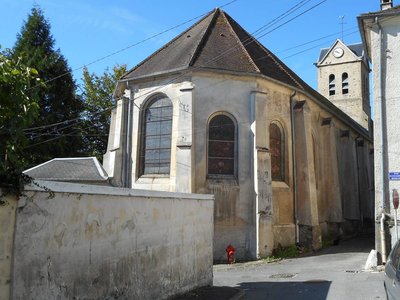
Église Sainte-Marguerite d‘Antioche à Nanteuil-sur-Marne - Fondation du Patrimoine TouristChurch Sainte-Marguerite-d'Antioche à Nanteuil-sur-Marne
The first church in Nanteuil-sur-Marne was destroyed during the Hundred Years War. It was rebuilt in the 16th century and enlarged in the 17th century. The bell tower collapsed in the 19th century and was rebuilt in the 20th century. After the bombings of the Second World War the stained glass windows of the choir were reconstructed from the elements of the old stained glass windows. The ceiling was rebuilt at the same time.
Description
In front of the church of Jouarre on the left, rue du Petit Palais, on the left rue de la Fontaine, on the right in the dirt road between two houses, cross the forest, straight ahead at the crossroads, on the left crossroads asphalt road in front of the mill of Petit Morin
- Left, rue du Petit Condetz, right rue du Déversoir, right avenue F.Roosselvelt, and cross the Petit Morin, at the roundabout take a dirt road on the left and follow the right bank of the Petit Morin, on the right at the confluence of the Petit Morin and the Marne follow the left bank of the Marne, pass under the Pont de l'Europe bridge, follow quai des Anglais, cross rue du Faubourg in front of the Charles-de-Gaulle bridge, stay on the left bank of the Marne, quai André Planson then rue du Stade follow the towpath on the banks of the Marne.
- Right after 1000 meters at the end of the sports fields, left crossroads with D 402, right rue de Rohan, at the crossroads right rue du Prieuré, left rue du Commandant Frot, second right rue du Tillet, take the tarmac road that runs along the cemetery go up opposite on the hill in the wood. Take the first road on the left, at the houses, at the crossroads turn left, join the D70a, turn right, at the crossroads turn left.
- At Vauharlin, turn right, take the narrow path at the foot of a calvary, go straight down towards Luzancy (5 km), straight on at the crossroads allée Corot, turn right rue de l'Eglise, then rue de la croix du bac, in front of the Marne on the left, cross the marne on the D402,
- After the bridge at the crossroads, in front of you, second on the left, go up rue du Bac, towards Mery, left Grande Rue, first road on the right, go into the forest, Chemin rural du Dessus du Temple, on the edge of the forest, right at the intersection rue de la Charrière, right rue de Passy, left rue Alexandre Morlot you arrive at the church of Nanteuil-sur-Marne.
- Departure : Saint-Pierre e Saint-Paul Church de Jouarre, rue Montmorin, 77640, Jouarre
- Arrival : Sainte-Marguerite d’Antioche Church, rue de l’église, 77730 Nanteuil-sur-Marne
- Towns crossed : Île-de-France
Altimetric profile
Report a problem or an error
If you have found an error on this page or if you have noticed any problems during your hike, please report them to us here:


